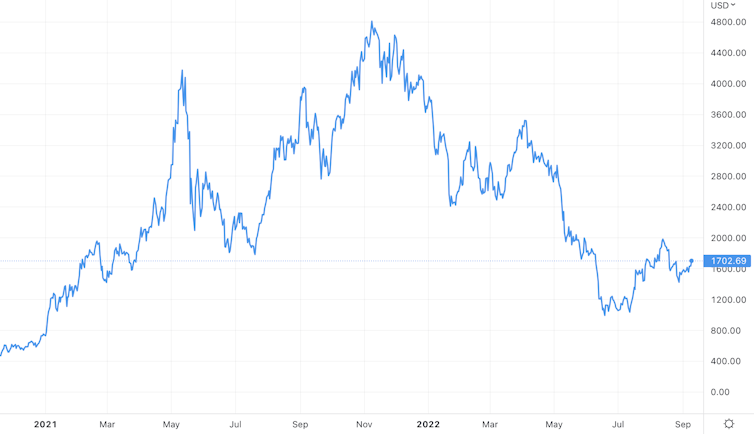The Ethereum merge could kick off a transformation in crypto's battered reputation
- Written by Jean-Philippe Serbera, Senior Lecturer in Banking And Financial Markets, Sheffield Hallam University

Cryptocurrencies might still be a very long way from their highs[1] of 2021, but some of the major ones have staged some decent recoveries in the past couple of months. Notably ether (ETH), the second largest cryptocurrency after bitcoin, is trading at almost US$1,700 (£1,463) at the time of writing, having dropped as low as US$876 in mid-June.
Ether, which was created by Canadian/Russian programmer Vitalik Buterin, is the cryptocurrency used for transactions on Ethereum[2], the leading platform on which developers can applications using blockchain technology.
Blockchains are online ledgers that run without been controlled by any single company. Much of these applications revolve around smart contracts, which are automated contracts that remove the need for intermediaries such as lawyers and are seen as having huge potential[3] for the future.
Ether price (US$)







